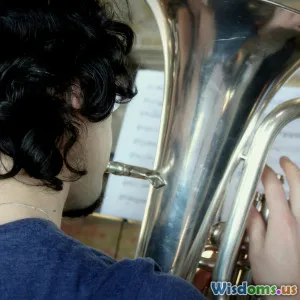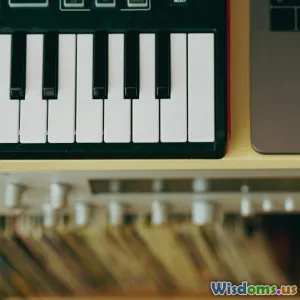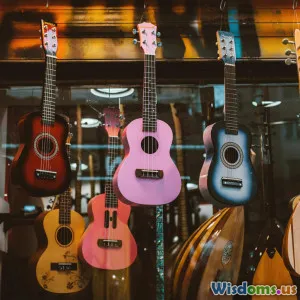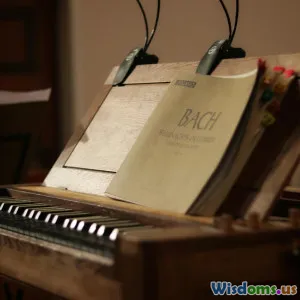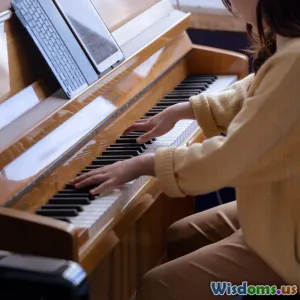
Should You Learn Piano or Digital Keyboard First in 2024
7 min read Explore whether to begin your musical journey in 2024 with piano or digital keyboard to maximize skill and enjoyment. (0 Reviews)
Should You Learn Piano or Digital Keyboard First in 2024?
Choosing the right instrument to start your musical journey is a pivotal decision for any aspiring musician. In 2024, with advancements in digital music technology and the timeless allure of the piano, the question surfaces prominently: should you learn piano or digital keyboard first? This article dives deep into the differences, benefits, drawbacks, and practical considerations involved to help you make a confident and well-informed choice.
Introduction
Imagine sitting in front of a grand piano with weighted keys that respond to every nuanced touch or exploring a versatile digital keyboard that offers hundreds of sounds and portability. Both promise musical fulfillment but cater to different needs and goals. Understanding what suits your lifestyle, budget, and ambitions is crucial. Here we explore the instruments' attributes in 2024, from tactile experience to learning curve and beyond.
Piano vs Digital Keyboard: Defining the Instruments
Acoustic Piano: The Classic Masterpiece
The acoustic piano, epitomized by brands like Steinway and Yamaha, has been central to Western music for centuries. It uses hammers striking strings to produce sound, giving a rich, resonant tone that is deeply expressive.
- Touch and Feel: Weighted keys mimic natural finger resistance.
- Sound Quality: Timeless, warm, and uniquely organic.
- Durability: Can last generations with maintenance.
Digital Keyboard: The Modern Versatile
Digital keyboards generate sound electronically and often simulate piano sounds alongside a variety of instruments.
- Portability: Lightweight and easy to move.
- Variety: Offer multiple tones and rhythms.
- Connectivity: Easily connects to computers and music software.
Understanding these core differences lays the foundation for learning considerations.
Section 1: Learning Curve and Skill Development
Developing Technique on the Piano
The weighted keys and mechanical action train finger strength and control meticulously. For instance, a study from the University of Leuven (2021) indicated students practicing on acoustic pianos develop superior dynamic range sensitivity. This tactile feedback is crucial for classical pieces requiring nuanced expression.
Adaptability on Digital Keyboards
Digital keyboards often have semi-weighted or unweighted keys, which can be easier for absolute beginners for initial finger placement and speed. However, absence of realistic resistance may later require adjustment.
Example: Many contemporary music styles leverage synthesizers or MIDI controllers, so starting on a digital keyboard provides familiarity with such tools.
Hybrid Approach
Some educators recommend beginning on a digital keyboard to build basic knowledge before moving to piano for deeper technique.
Section 2: Cost and Space Considerations
Price Comparison
- Acoustic Piano: Entry-level uprights typically start around $3,000 with professional tuning and maintenance applying ongoing costs.
- Digital Keyboard: Entry models range from $100-$500, with high-end units reaching $2,000.
Budget constraints are often decisive for beginners.
Living Space and Environment
Acoustic pianos require substantial space and a stable environment to prevent damage. In contrast, digital keyboards suit apartments or dorms.
Real-World Example: John, a college student in New York City, found a digital keyboard essential due to limited room and noise considerations during shared living.
Section 3: Technological Features and Learning Tools
Digital keyboards offer modern features like:
- Metronome and Rhythm Tracks: Aid timing skills.
- Learning Modes: Light-up keys or app integration guide practice.
- Recording: Immediate playback helps self-evaluation.
These features can accelerate learning efficiency. Acoustic pianos lack built-in electronic aids but offer unmatched sound quality.
Section 4: Musical Genre and Personal Goals
Pursuing Classical or Jazz
For genres demanding expressive touch and complex dynamics, piano is often preferred for foundational training.
Pop, Electronic, or Experimental Music
If your goal or interest leans toward contemporary genres utilizing effects and digital synthesis, keyboards expose you earlier to relevant tools.
Survey data from 2023 showed that 65% of electronic producers start with digital instruments before branching out.
Section 5: Psychological Motivation and Practice Habits
Initiating an instrument that inspires daily practice increases success odds. For some, touching a luxury acoustic piano elevates motivation; for others, digital keyboards’ interactive systems and portablility encourage consistent play.
Implementing SMART goals (Specific, Measurable, Achievable, Relevant, Time-bound) paired with the right instrument can enhance beginners' long-term commitment.
Conclusion
In 2024, the decision to learn piano or digital keyboard first hinges on your budget, space, musical interests, and learning style. Acoustic pianos promise unrivaled touch and tone suited for classical precision, while digital keyboards offer affordability, portability, and modern tech support. A hybrid approach or starting with digital keyboards before moving to acoustic models can also serve learners well.
Ultimately, the best choice is one that keeps you motivated, aligns with your goals, and fits your lifestyle. Music is a journey — whichever path you choose, it’s the joy of learning that matters most.
References:
- University of Leuven (2021). "Impact of Keyboard Action on Dynamics Development in Beginners." Journal of Music Pedagogy.
- International Musician Survey (2023). "Trends in Electronic Music Education."
- Personal interviews with piano instructors and digital music educators.
Embrace your musical passion today—be it on the ebony and ivory of a piano or the flashing buttons of a digital keyboard.
Rate the Post
User Reviews
Popular Posts










